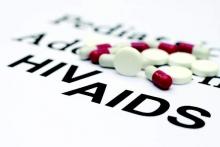A large volume of HIV and AIDS research enters the medical literature every month. It’s difficult to monitor everything, so here’s a quick look at some notable news items and journal articles published over the past few weeks.
Researchers have identified the molecular mechanisms by which the Tat protein made by HIV interacts with the host cell to activate or repress several hundred human genes. “The findings clearly suggest that blocking Tat activity may be of therapeutic value to HIV patients,” said Dr. Iván D’Orso of the department of microbiology at University of Texas Southwestern, Dallas, who is senior author of the study. The study provides insights into HIV’s ability to survive despite antiretroviral therapy, findings that could lead to new therapeutic targets or ways to make current therapies more effective.
A study published in Nature found that HIV is still replicating in lymphoid tissue, even when it is undetectable in the blood of patients on antiretroviral drugs. The findings provide a new perspective on how the HIV virus rapidly rebounds in the blood if patients stop antiretroviral therapy. This suggests that long-lived latently infected cells and/or ongoing low levels of HIV replication maintain these viral reservoirs.
A research team at the University of Maryland, Baltimore, explored a potential interrelationship between smoking, highly active antiretroviral therapy (HAART), and HIV immune status. They discovered that HIV-positive status, along with concurrent tobacco smoking, is associated with declines in pulmonary function test in HIV-infected women, but that the use of HAART in patients appears to mitigate the increases in IL-8 levels in relation to immune status, based on CD4 count.
New research published in the Journal of Hospital Infection suggests that a treatment regimen of two nucleoside reverse transcriptase inhibitors plus efavirenz should not be used for HIV prophylaxis following occupational exposure, particularly in resource-limited settings. The study indicates that such a regimen was significantly associated with premature discontinuation of occupational postexposure prophylaxis among health care workers.
A study in the journal Sexually Transmitted Diseases suggests that adolescent environmental influences and individual characteristics drive some sexual risk behaviors and may be more effective targets for sexually transmitted infection and HIV prevention interventions than do proximal risk behaviors.
Immediate antiretroviral therapy initiation is expected to substantially lower mortality among persons recently diagnosed with HIV in the United States, according to new research published in the International Journal of Epidemiology. Investigators also demonstrated a method by which concerns about generalizability can be addressed and evaluated quantitatively.
Researchers discovered that, compared with hepatitis C virus antibody–negative status, chronic HCV infection was associated with lower CD4/CD8 ratios when HIV viral load was suppressed to the lower limit of quantification. Cleared HCV, but not IFNL4-[DELTA]G genotype or HCV viral load, was also associated with lower CD4/CD8 ratios when HIV viral load was suppressed to the LLQ.” The results support the use of CD4/CD8 ratio for routine monitoring of immune activation and inflammation in HIV+ patients, including those with HIV/HCV coinfection.
On Twitter @richpizzi

